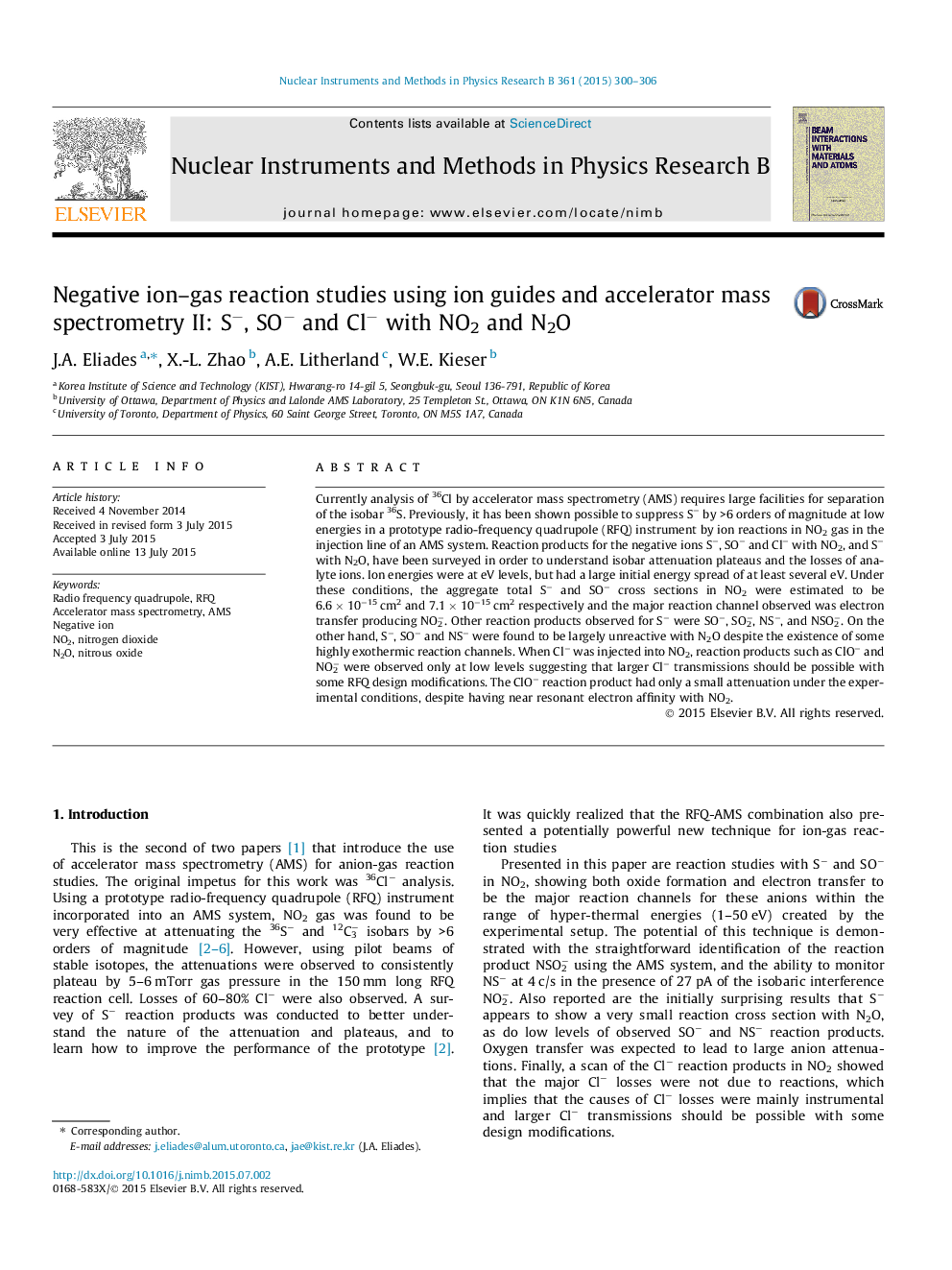| Article ID | Journal | Published Year | Pages | File Type |
|---|---|---|---|---|
| 8040418 | Nuclear Instruments and Methods in Physics Research Section B: Beam Interactions with Materials and Atoms | 2015 | 7 Pages |
Abstract
Currently analysis of 36Cl by accelerator mass spectrometry (AMS) requires large facilities for separation of the isobar 36S. Previously, it has been shown possible to suppress Sâ by >6 orders of magnitude at low energies in a prototype radio-frequency quadrupole (RFQ) instrument by ion reactions in NO2 gas in the injection line of an AMS system. Reaction products for the negative ions Sâ, SOâ and Clâ with NO2, and Sâ with N2O, have been surveyed in order to understand isobar attenuation plateaus and the losses of analyte ions. Ion energies were at eV levels, but had a large initial energy spread of at least several eV. Under these conditions, the aggregate total Sâ and SOâ cross sections in NO2 were estimated to be 6.6Â ÃÂ 10â15Â cm2 and 7.1Â ÃÂ 10â15Â cm2 respectively and the major reaction channel observed was electron transfer producing NO2â. Other reaction products observed for Sâ were SOâ, SO2â, NSâ, and NSO2â. On the other hand, Sâ, SOâ and NSâ were found to be largely unreactive with N2O despite the existence of some highly exothermic reaction channels. When Clâ was injected into NO2, reaction products such as ClOâ and NO2â were observed only at low levels suggesting that larger Clâ transmissions should be possible with some RFQ design modifications. The ClOâ reaction product had only a small attenuation under the experimental conditions, despite having near resonant electron affinity with NO2.
Related Topics
Physical Sciences and Engineering
Materials Science
Surfaces, Coatings and Films
Authors
J.A. Eliades, X.-L. Zhao, A.E. Litherland, W.E. Kieser,
